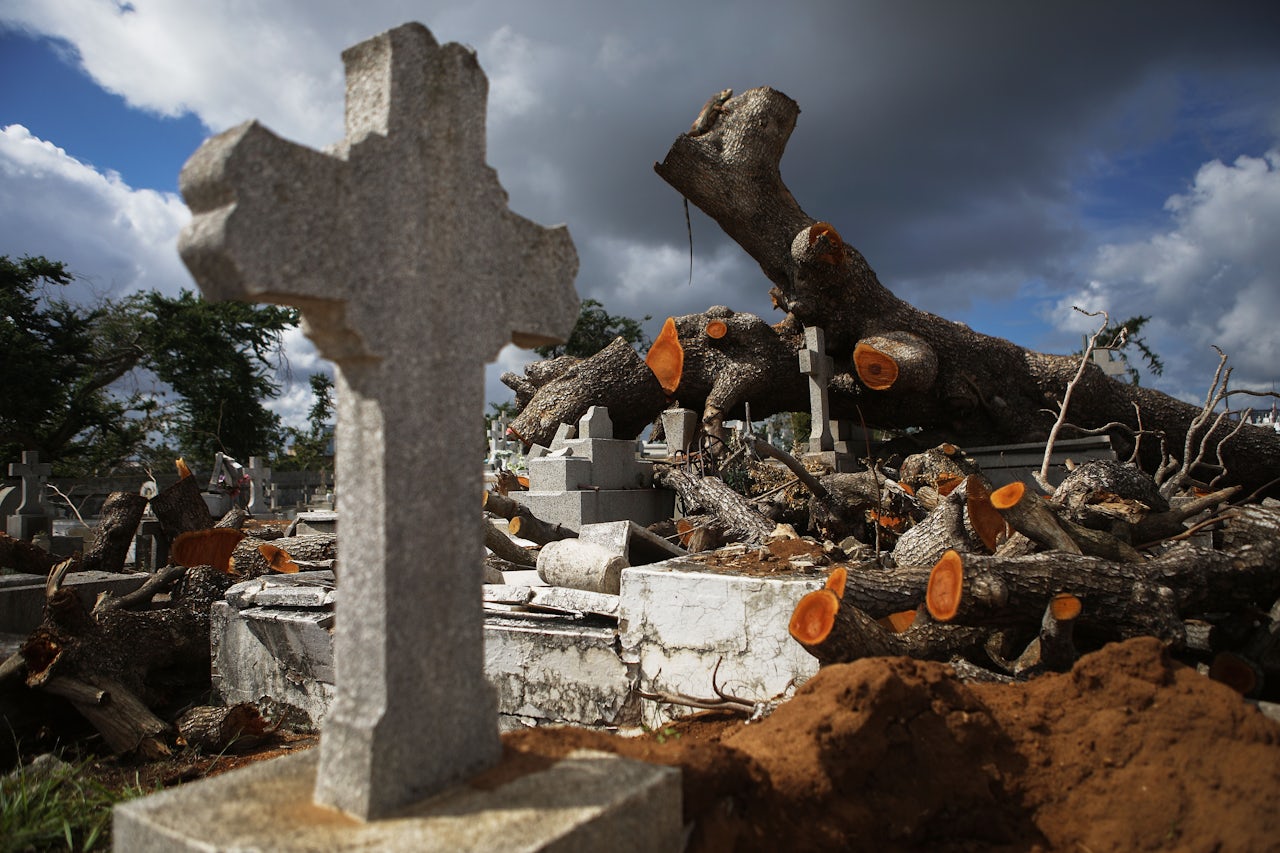In the aftermath of Hurricane Maria, the number of people who died in Puerto Rico was much higher than the official death count of 64. This has been common knowledge for months, but only now are we beginning to get a sense of the tragedy in its full scope.
A study published today by researchers at Harvard University indicates that over 5,000 people died between September and December of 2017. That’s more than 70 times greater than Puerto Rico’s Department of Public Safety’s official death count.
Back in September and October, Investigations by Buzzfeed, the Center for Investigative Journalism, and The New York Times indicated that the number of deaths in Puerto Rico was likely at least 900 and perhaps over 1,000. Harvard’s independent review of the number of deaths in Puerto Rico will not be the last of its kind; in fact, George Washington University researchers were recently given the green light for a similar review.
The estimate accounts for direct causes of death due to the hurricane, such as bodily injury or drowning, as well as indirect causes of death: One third of all deaths caused by Maria could be attributed to “delayed or interrupted health care” as well as lack of access to food, water, and other necessities, the study said.
The Harvard researchers estimate that official death count numbers severely underestimated the impact of the hurricane due to the difficulty of firmly associating indirect deaths with a single causational event, as well as bureaucratic delays in medical examinations. Other news outlets have also pointed out that bodies were often buried quickly after death, which can prevent an in-depth investigation into cause of death. Puerto Rico is also still not recovered from Hurricane Maria, leaving it at a limited capacity to address the number of deaths accurately.
Researchers addressed these problems by comparing the number of deaths in 2017 with the number of deaths in the same time period in 2016. In other words, by addressing the problem in context of previous death rates, they were able to get more a different, possibly more reliable figure. While it would be impossible to count indirect deaths directly, the year-to-year variation gives a ballpark figure.
Since October, government officials have been triumphantly repeating impossibly low figures. In October, when the official death count in Puerto Rico was still sixteen, President Trump visited Puerto Rico, threw paper towels into a crowd of people in need of federal aid, and spoke of the low official death count with pride.
“If you look at a real catastrophe like Katrina, and you look at the hundreds and hundreds of people that died—what is your death count? Sixteen,” Trump said in October. “You can be very proud of all of your people.”
In the months following Trump’s statement, thousands more people died.
For months after the hurricane, people in Puerto Rico didn’t have basic medical services, food, and clean water. In January, FEMA cut off food and water aid to Puerto Rican victims of the hurricane. Although access to food and water has improved in the region, most 14,000 people in Puerto Rico still don’t have electricity, and the Atlantic hurricane season begins on June 1. Thousands of people who depend on electricity for air conditioning, medical devices, food storage, and general quality of life remain inexcusably vulnerable for the upcoming season.
There is absolutely no ambiguity about what happened in Puerto Rico: Neglect and indifference from the U.S. government resulted in the unnecessary deaths of thousands of people in a U.S. province built upon principles of racism.
